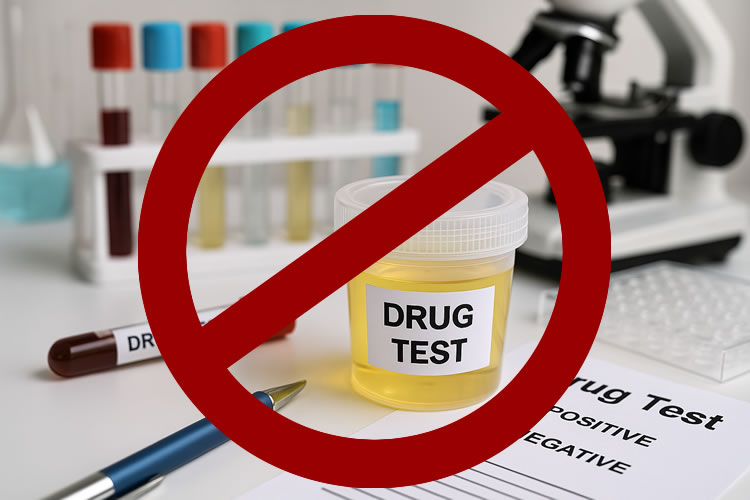Two state statutes enacted in 1987 and still in effect today sharply restrict when Vermont employers may test workers for drugs or alcohol and how they may respond to a positive result.
Under Title 21, Chapter 5, Subchapter 11, random or company-wide testing is prohibited except where required by federal law. The law permits testing only under narrow conditions and requires employers to provide rehabilitation before firing a worker who tests positive.
Statutory Restrictions
Section 21 V.S.A. § 513 bars an employer from requesting or requiring a drug test as a condition of hiring, promotion, or continued employment. Random testing is specifically banned. Testing may occur only if all of the following apply:
- The employer has probable cause to believe an employee is using or under the influence of a drug while on duty.
- A bona fide employee-assistance or rehabilitation program is available to the worker.
- The employee cannot be terminated on the first positive result if he or she agrees to participate in and successfully completes that program. Suspension is permitted only for the period needed to complete rehabilitation, up to three months.
- Testing must follow the procedures outlined in § 514.
A worker may be dismissed if, after completing a program, a later test given under the same conditions again returns positive.
Testing Procedures
Section 21 V.S.A. § 514 details how any test must be performed. Key provisions include:
- Tests may screen only for alcohol or drugs “at non-therapeutic levels.”
- The employer must issue a written policy explaining when testing may occur, what drugs are included, and the consequences of a positive result.
- Testing must use a Department of Health-designated laboratory and follow strict chain-of-custody procedures.
- Blood draws for drug testing are prohibited.
- Positive urine screens must be confirmed by gas chromatography/mass spectrometry or an equivalent method, and a portion of any positive sample must be preserved for 90 days for possible retesting.
- A certified Medical Review Officer must review all results and communicate them to both the employee and the employervtstatutes.
These requirements make Vermont’s process among the most detailed and restrictive in the nation.
🍁 Make a One-Time Contribution — Stand Up for Accountability in Vermont 🍁
Effect on Employers
Because random testing is not allowed and first-time positives must be routed through rehabilitation rather than immediate termination, the statutes place significant procedural limits on workplace enforcement. Employers remain free to dismiss employees for other reasons, but a discharge explicitly tied to a drug test must comply with the rehabilitation provisions of § 513.
Substance Detection Windows
Toxicology references show wide variation in how long different drugs remain detectable in standard tests and how long impairment may last:
| Substance | Duration of High | Typical Next-Day Impact | Detection (Urine) |
|---|---|---|---|
| Alcohol | 2–6 hrs | Hangover 12–24 hrs | Immediate (breath/blood) |
| Cannabis | 2–6 hrs | Possible fogginess 6–12 hrs | Days to weeks |
| LSD | 8–12 hrs | Cognitive effects 24–48 hrs | 1–3 days |
| Psilocybin | 4–6 hrs | Fatigue / sleep loss | 1–3 days |
| Heroin | 3–6 hrs | Sedation / withdrawal same day | 1–3 days |
| Cocaine / Crack | <1 hr | Crash 24–48 hrs | 2–4 days |
| Methamphetamine | 8–12 hrs + | Crash 24–72 hrs | 3–5 days |
Alcohol testing correlates closely with current impairment, but most other drugs leave residual traces long after intoxication has ended. That distinction contributes to Vermont’s emphasis on privacy and rehabilitation rather than zero-tolerance enforcement.
Federal Exceptions
The state law does not override federal mandates. Truck drivers, pilots, and other federally regulated workers remain subject to random and post-accident testing under Department of Transportation rules, which require immediate removal from duty after a positive result.
Summary
Vermont law forbids random or blanket drug testing, limits testing to cases of probable cause or conditional offers, and requires employers to provide and fund rehabilitation before termination after a first positive result. Tests must follow Department of Health standards and include confirmation and medical review. The statutes have remained largely unchanged since their adoption and continue to define one of the most restrictive employment-testing frameworks in the country.
Dave Soulia | FYIVT
You can find FYIVT on YouTube | X(Twitter) | Facebook | Parler (@fyivt) | Gab | Instagram
#fyivt #VermontLaw #WorkplaceSafety #DrugTesting
Support Us for as Little as $5 – Get In The Fight!!
Make a Big Impact with $25/month—Become a Premium Supporter!
Join the Top Tier of Supporters with $50/month—Become a SUPER Supporter!









Leave a Reply